Did you know that birdsong is a natural form of therapy for the soul? Their gentle melodies have been shown to reduce stress, ease anxiety, and lift our mood—offering a calming escape, especially in the noise and chaos of urban life. In many ways, these soothing sounds are nature’s own remedy, reminding us to pause, breathe, and reconnect.
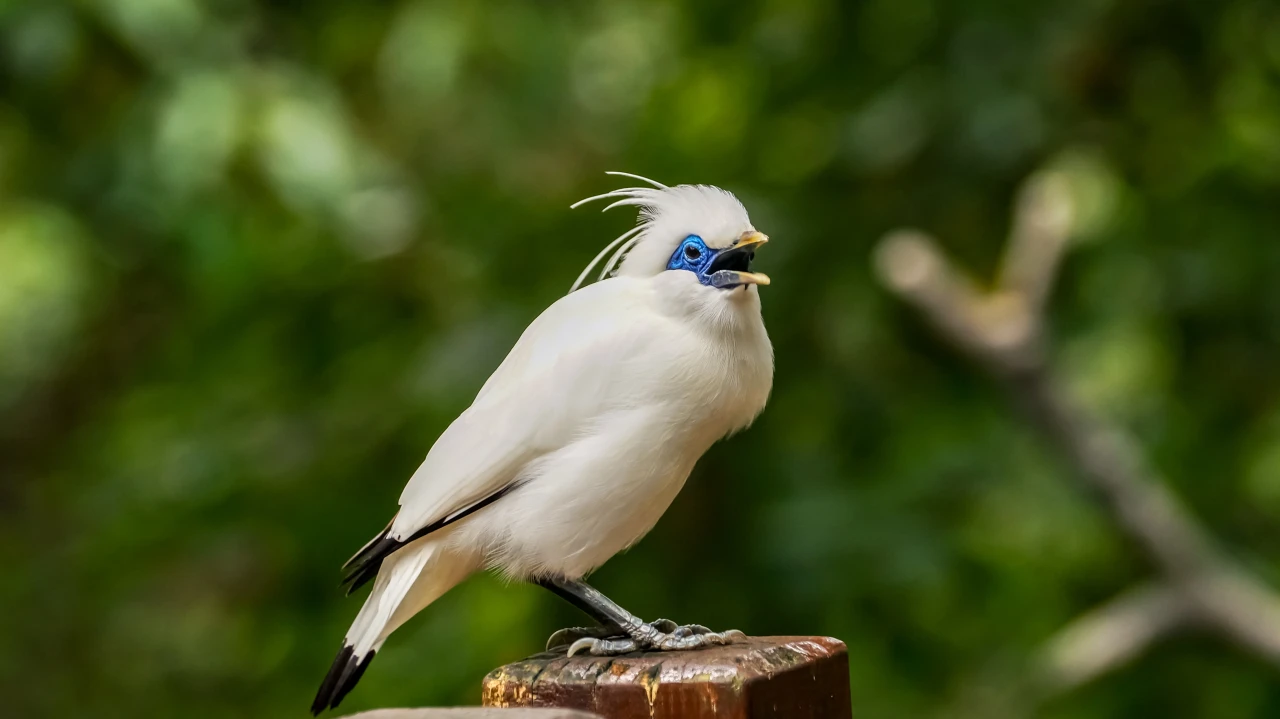
Nowhere is this symphony of birds more vibrant than in Indonesia, a country blessed with one of the richest bird biodiversities on Earth. With over 1,700 known species, Indonesia’s skies, forests, wetlands, and mountains are alive with color, song, and motion. From the highlands of Papua to the mangroves of Sumatra, each bird adds its own verse to this endless avian chorus.
Every species—whether bold or delicate, flamboyant or subtle—has its own voice, plumage, and personality. These unique traits have made Indonesia a paradise not just for birds, but for the many bird lovers and enthusiasts who celebrate them. Many songbirds are admired for their enchanting calls and even compete in bird singing contests across the country.
So, what are some of the remarkable songbirds that call Indonesia home—and what makes them so special?
Bird of Paradise
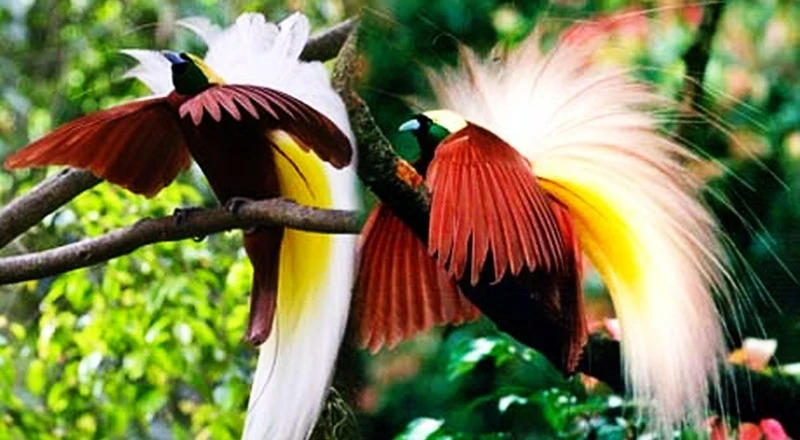
The Bird of Paradise, known in Indonesian as Burung Cenderawasih and classified under the Latin genus Paradisaea, is world-renowned for its dazzling, brightly colored plumage—especially in males. These vivid feathers have earned the bird its nickname, as well as unwanted attention from hunters and collectors.
Native to the dense rainforests of eastern Indonesia, Papua, and parts of eastern Australia, the Cenderawasih thrives in remote, tropical habitats. One of their most iconic features is their mesmerizing courtship rituals: male birds perform elaborate, well-rehearsed dances—cleaning their beaks, fluffing their feathers, and dramatically spreading their ornamental plumes to impress and attract a mate.
In Indonesian culture, the Cenderawasih is revered as a symbol of beauty, nobility, and eternal life. Its image often appears in traditional Papuan attire, ceremonial ornaments, textiles, and artistic motifs.
However, the population of these birds is under threat due to habitat destruction and illegal poaching. As a result, Cenderawasih species are protected under Indonesian law, which prohibits their hunting or trade. Violations can lead to up to five years in prison and fines of up to 100 million rupiah.
Oriental Magpie-Robi
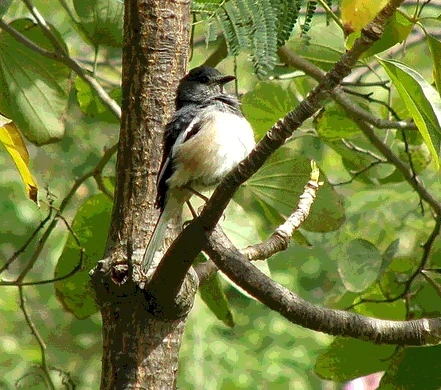
The Oriental Magpie-Robin (Copsychus saularis), known as Kacer in Indonesia, is a popular songbird admired for its melodic voice and its ability to mimic various sounds, often while performing playful, dance-like movements. This bird is also recognized for its distinctive and sometimes amusing behavior, which sets it apart from other passerine species.
Among bird enthusiasts, especially the Javanese, a notable behavior called “mbagong” is well known. This is a stress or fear response where the bird puffs up its feathers, stands upright, juts its head forward, drops its tail, and emits harsh or unpleasant sounds. In the context of bird singing competitions, this behavior is seen as a sign that the bird has "lost" or is not in peak form. Despite this, the mbagong trait adds a certain charm to the Kacer, making it even more endearing to fans.
There are two main regional types of Kacer:
- Kacer Poci (typically from Sumatra, characterized by a black-and-white body), and
- Kacer Jawa (from Java).
Both are popular in singing contests and are priced anywhere from 300,000 to 1.5 million IDR, depending on the bird’s age, song quality, and training level.
Red-Whiskered Thrush
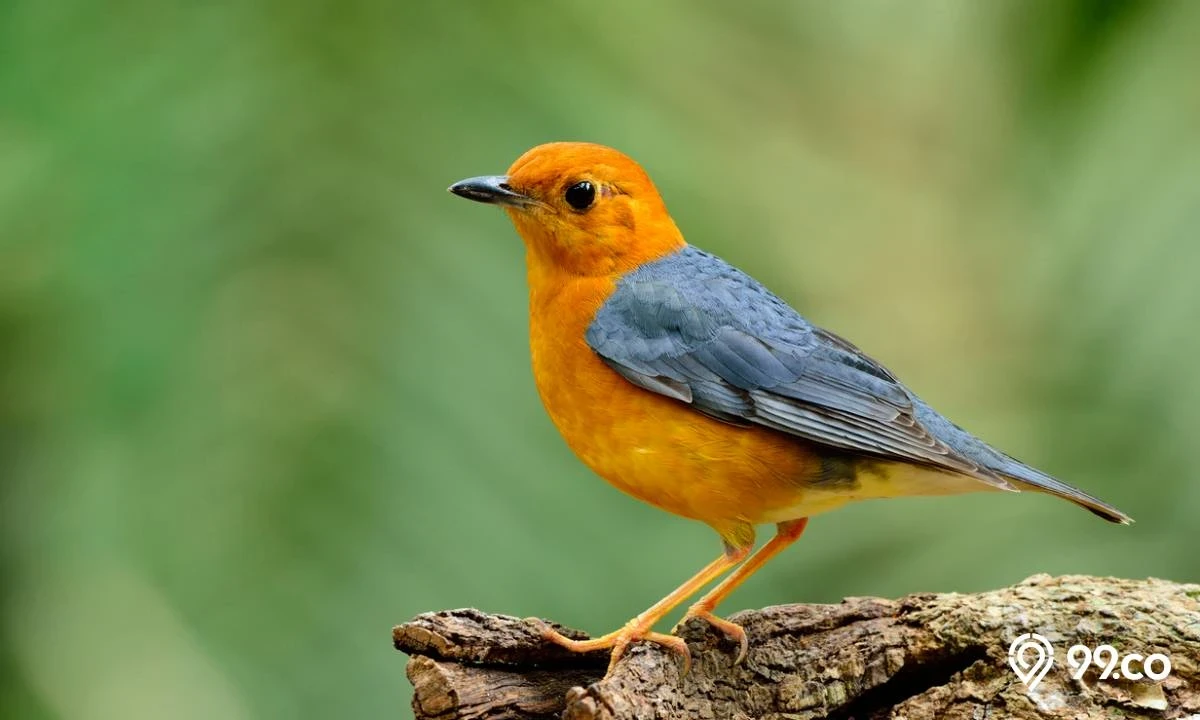
The Anis Merah, also known in English as the Red-Whiskered Thrush or Orange-headed Thrush, and scientifically named Geokichla citrina, is one of the most beloved songbirds in Indonesia. Often hailed as the "queen of songbirds", this bird is celebrated for its powerful, melodious voice and graceful movements during singing.
One of the Anis Merah’s most captivating traits is a rhythmic swaying motion known as “teler” in Indonesian. During this display, the bird appears to be completely lost in its own song—rocking gently back and forth in a trance-like state. This behavior is highly prized in songbird competitions, where it draws both admiration and applause.
Visually, the Anis Merah is stunning, with a bright orange-reddish chest and belly, complemented by more muted tones on the wings and back. Male birds are usually more striking in both appearance and vocal performance, making them more desirable to collectors and competitors. However, the species is known for its sensitivity and can be easily startled or stressed by loud noises or unfamiliar environments.
The price of an Anis Merah in Indonesia typically ranges from 550,000 to 1.7 million rupiah, depending on factors such as age, song quality, and lineage.
Golden Hornbill
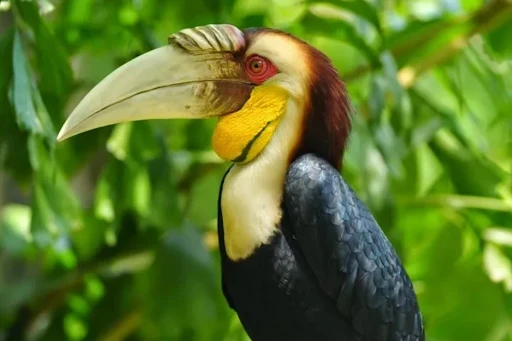
The Golden Hornbill, known in Indonesian as Julang Emas, and scientifically named Rhyticeros undulatus, is a large and striking bird native to Southeast Asia, including Kalimantan (Borneo) and parts of Bali. A close relative, the Julang Irian (Rhyticeros plicatus), inhabits Eastern Indonesia, particularly Papua, Maluku, as well as neighboring regions like New Guinea, the Solomon Islands, and the Bismarck Archipelago.
This hornbill species is most recognized by its large, heavy casque-topped beak, which can account for up to 13% of its body weight. The beak is not just a striking feature but also serves as a tool in territorial disputes. When used in combat or displays, it can create a distinctive “laughing” sound, which can be heard from as far as a kilometer away. Additionally, the powerful flapping of its wings produces a loud, rhythmic noise — a characteristic sound of the tropical forests it inhabits. Interestingly, this sound is dampened when the bird's wings are wet.
Golden Hornbills have a buzzing, hoarse grunt-like call, adding to their unique auditory presence in the wild. They are frugivores, primarily feeding on fruits like nutmeg and matoa, but their diet also includes insects, crabs, and small reptiles.
Due to their size and specialized habitat needs, these birds are highly intolerant of captivity. They require vast, undisturbed forests, making them especially vulnerable to deforestation and poaching. Tragically, their population is predicted to decline by 30–49% over the next three generations, prompting conservationists to push for their official classification as “Vulnerable” on the IUCN Red List.
Bali Myna
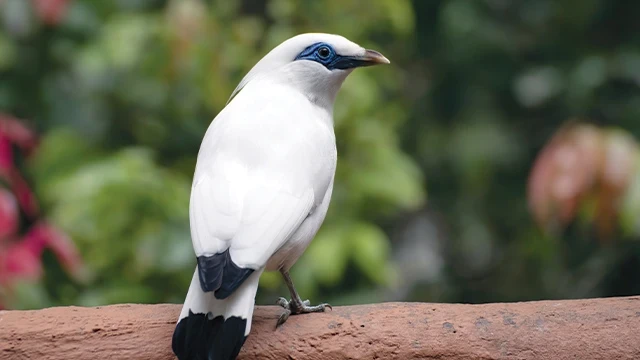
The Bali Myna, known locally as Jalak Bali and scientifically as Leucopsar rothschildi, is a critically endangered bird species found exclusively on the island of Bali, Indonesia. This stunning bird is celebrated for its pure white plumage, elegant backward-curving crest, and the vivid blue skin around its eyes—making it one of the most visually striking birds in Southeast Asia.
Measuring around 25 cm in length, the Bali Myna also features black wing and tail tips, adding contrast to its snowy appearance. Its gentle chirps and inquisitive nature contribute to its popularity among bird lovers, but unfortunately, its beauty has made it a target for illegal wildlife trade.
Once widespread across western Bali, the Bali Myna is now confined to the West Bali National Park, the only place where it survives in the wild. The population decline has been driven by poaching and habitat loss, pushing the species to the brink of extinction. At its lowest point, fewer than 10 individuals were recorded in the wild.
Conservation efforts are now heavily focused on breeding and reintroduction programs. Thanks to strict protection measures and support from both local and international conservation groups, the population has slowly started to recover, although the bird remains classified as "Critically Endangered" on the IUCN Red List.
The Bali Myna holds deep symbolic value for the Balinese people and is often regarded as a living emblem of Bali’s natural heritage. It is also the official fauna symbol of Bali province, and its image appears in local art, signage, and conservation campaigns.
Blue-crowned Pigeon

The Blue-crowned Pigeon, known in Indonesian as Merpati Mahkota Biru and scientifically as Goura cristata, is one of the largest and most visually striking pigeon species in the world. Endemic to the lowland forests of Papua, this majestic bird is admired for its graceful appearance, soothing presence, and royal blue plumage.
Measuring up to 70 cm in length, the Blue-crowned Pigeon features soft blue-gray feathers, a delicate lace-like crest on its head resembling a crown, and deep red eyes that contrast vividly with its plumage. Its calm, gentle behavior and slow, ground-foraging movements make it stand out among forest birds.
This species is a member of the Goura genus, which includes the world’s only crowned pigeons, all native to New Guinea and surrounding islands. The Blue-crowned Pigeon is often considered the most elegant of them all.
Despite its serene nature, the Blue-crowned Pigeon faces serious threats due to illegal hunting, habitat destruction, and the pet trade, primarily because of its exotic looks. It is currently listed as "Vulnerable" on the IUCN Red List, and its population continues to decline in the wild.
In Indonesia, the Merpati Mahkota Biru is protected under national wildlife laws. Conservation efforts focus on habitat preservation, captive breeding, and raising public awareness to reduce hunting and support forest conservation.
This iconic pigeon is not just a symbol of Papua’s biodiversity but also a reminder of the importance of preserving natural habitats for future generations.
Javan Hawk-Eagle
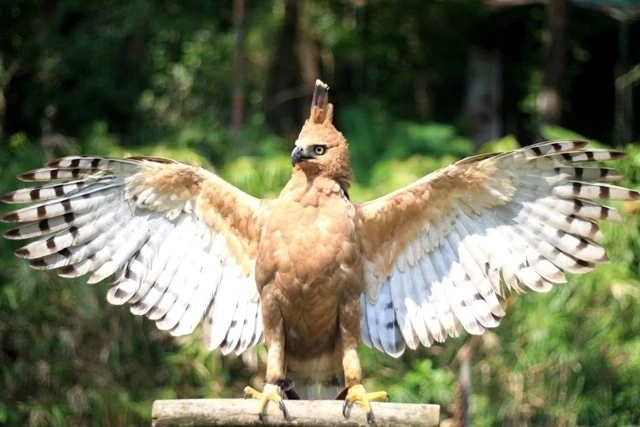
The Javan Hawk-Eagle, known in Indonesian as Elang Jawa and scientifically as Nisaetus bartelsi, is a rare and majestic raptor found only on the island of Java, Indonesia. Endemic to the dense tropical forests of the island, this striking bird is considered a national treasure and has been declared the official bird of Indonesia since 1993, symbolizing strength, grace, and independence.
The Elang Jawa is easily recognized by its distinctive crest, often compared to a miniature version of the mythical Garuda, which inspired Indonesia's national emblem. Its dark brown plumage, barred chest, and piercing yellow eyes give it a noble and commanding presence. Adult individuals typically reach 60–70 cm in length, with strong talons and keen eyesight that make them skilled hunters, primarily feeding on birds, reptiles, and small mammals.
Due to extensive deforestation, habitat fragmentation, and illegal wildlife trade, the Javan Hawk-Eagle has become critically endangered, with estimates suggesting fewer than 300 individuals remaining in the wild. Its reliance on large tracts of undisturbed forest makes it especially vulnerable to environmental changes.
Today, it is fully protected under Indonesian law, and several conservation initiatives—including habitat protection, captive breeding, and public education—are underway to prevent its extinction. The bird plays a powerful role in raising environmental awareness, especially among youth and conservationists in Indonesia.
Its presence is not only vital for the ecosystem but also serves as a living symbol of Indonesia’s cultural and natural heritage.
White Cockatoo

The White Cockatoo, known in Indonesian as Kakaktua Putih and scientifically as Cacatua alba, is a striking, intelligent parrot species native to the northern Moluccan Islands (Maluku Utara) in eastern Indonesia. This large, all-white bird is instantly recognizable by its graceful crest, which fans out dramatically when the bird is excited, alarmed, or seeking attention.
Belonging to the cockatoo family (Cacatuidae), the White Cockatoo is known for its high intelligence, emotional sensitivity, and exceptional mimicry skills. With proper interaction and training, these birds can imitate human speech, perform simple tricks, respond to commands, and even show signs of affection or mood through vocalizations and expressive body movements.
Their social and affectionate nature makes them deeply attached to their human companions. They thrive on interaction and can form strong emotional bonds, often becoming visibly distressed if left alone or neglected. In the wild and in captivity, they are also monogamous, forming long-term pair bonds with a single mate.
These cockatoos are playful, curious, and often described as "clownish" due to their entertaining personalities. They require mental stimulation, social interaction, and space to move, making them a challenging species to keep as pets—but incredibly rewarding for experienced caregivers.
Due to illegal trapping for the pet trade, habitat destruction, and their low reproductive rate (usually only one chick per breeding season), the White Cockatoo is classified as "Endangered" on the IUCN Red List. Indonesia has placed it under legal protection, and conservation efforts include habitat preservation and captive breeding programs.
The White Cockatoo is not just a stunning bird—it is a living symbol of the rich biodiversity of Indonesia’s Maluku region, and its preservation reflects the broader efforts to protect the archipelago’s unique wildlife.
Aceh Flycatcher
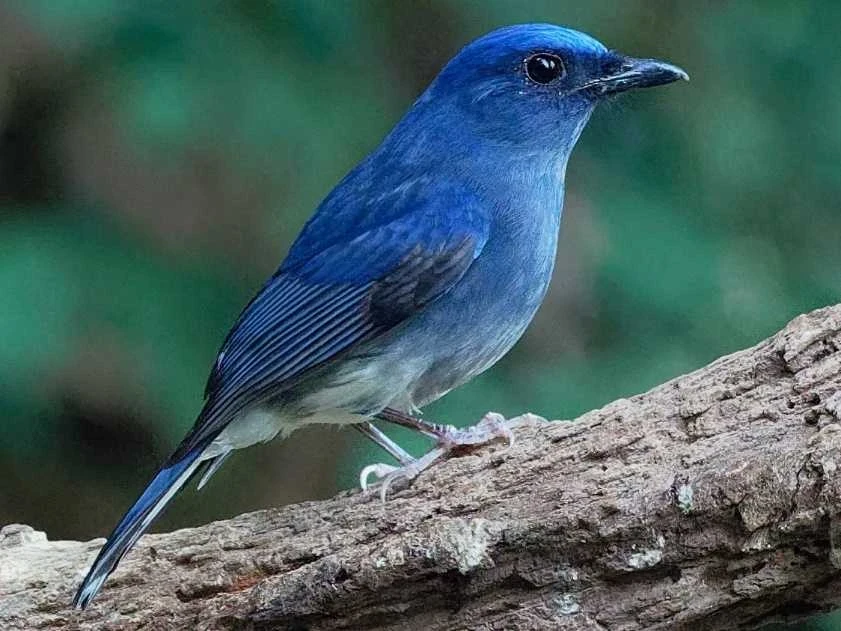
The Aceh Flycatcher, known in Indonesian as Sikatan Aceh and scientifically as Cyornis ruckii, is one of the rarest and least studied birds in the world. Endemic to northern Sumatra, particularly the Aceh Province, this elusive flycatcher inhabits tropical and secondary lowland forests, where it is rarely observed due to its secretive behavior and declining population.
This beautiful bird is notable for its delicate bluish plumage, with vivid accents on the head and wings, which stand out against the deep greens of Sumatra’s forests. Its appearance is matched by its melodious and gentle song, making it a highly prized species among birdwatchers and ornithologists.
Despite its striking beauty, the Aceh Flycatcher is critically endangered and very little is known about its ecology or behavior. It was once believed to be extinct until a rediscovery confirmed its presence in the wild. The primary threats to its survival are deforestation, habitat degradation, and limited range, as the bird is found only in specific areas of Sumatra’s lowland forests—an ecosystem rapidly disappearing due to logging and land conversion.
Because of its rarity and the lack of comprehensive data, the Aceh Flycatcher is listed as "Critically Endangered" on the IUCN Red List. Conservationists emphasize the urgent need to preserve its habitat, enforce protective legislation, and conduct further research to understand the bird's habits, population size, and breeding patterns.
The Aceh Flycatcher symbolizes the fragile biodiversity of Indonesia’s forests and serves as a call to action for environmental protection across Sumatra.
White-rumped Shama
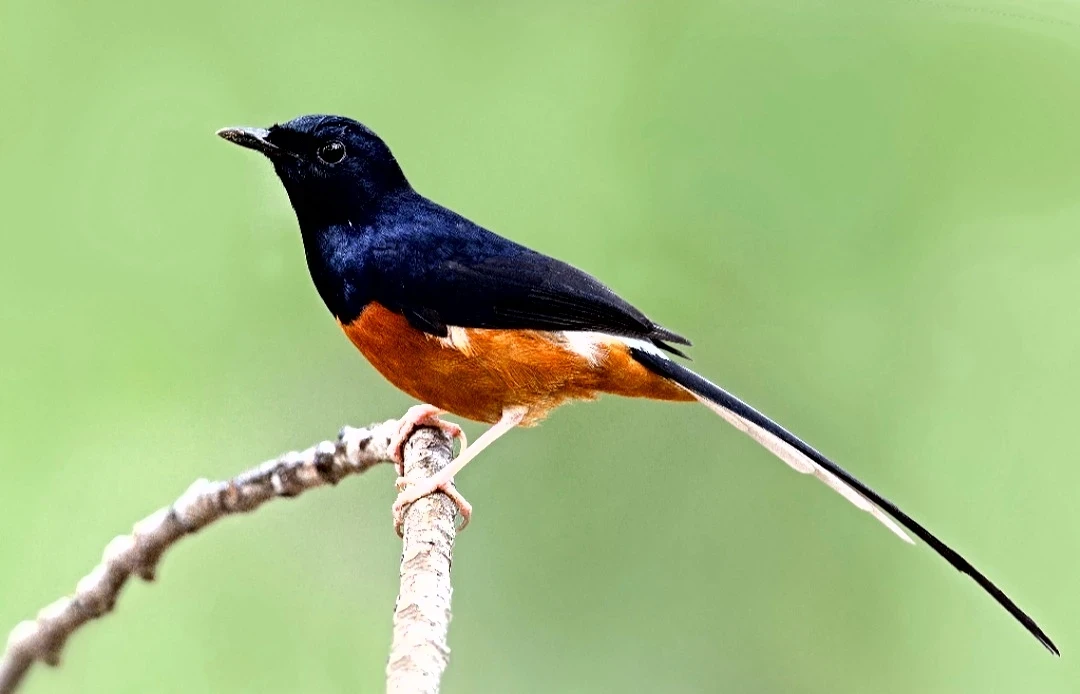
The White-rumped Shama, known in Indonesia as Burung Murai Batu and scientifically as Copsychus malabaricus, is one of the most beloved songbirds in Southeast Asia, particularly in Indonesia, Malaysia, and Thailand. Native populations thrive across the islands of Sumatra, Java, and Kalimantan, where the bird is not only admired for its beauty but also plays a central role in bird song competitions.
Renowned for its rich, melodious, and varied song, the Murai Batu can mimic other bird species and even environmental sounds, making it a favorite among birdkeepers and breeders. Its vocal power and versatility are especially prized in competitive events, where performance and vocal range determine prestige and value.
Visually, the White-rumped Shama is just as captivating. It features a glossy black or dark blue head and chest, a rusty-orange belly, and a signature white patch on the rump. One of its most striking features is its long, expressive tail, which can extend up to 30 centimeters. During displays or singing, the bird often raises and fans its tail, signaling dominance and vitality—a behavior that enchants both judges and spectators.
The Murai Batu is an energetic and intelligent bird, often kept in specially designed cages that enhance its singing ability. Males are generally more sought after for their vocal strength and display behaviors.
However, despite its popularity, wild populations of Murai Batu are under pressure due to over-trapping and illegal trade. Conservationists are now urging for sustainable breeding practices and stricter enforcement to protect the species in the wild.
In Indonesian culture, the Murai Batu symbolizes beauty, elegance, and the art of vocal mastery, securing its place as one of the most iconic birds in the archipelago.
Rinjani Scops Owl
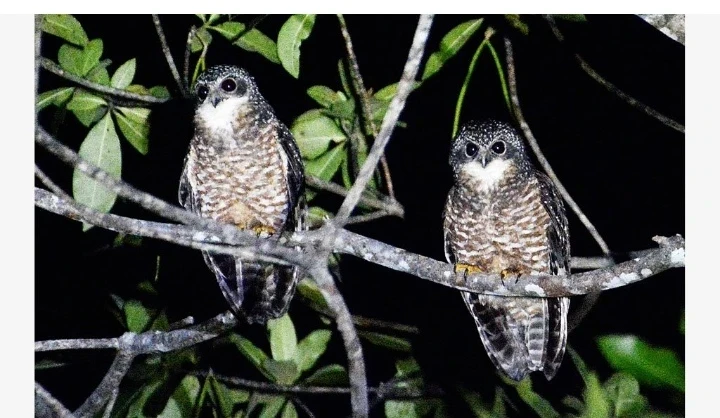
The Rinjani Scops Owl, known in Indonesian as Celepuk Rinjani and scientifically named Otus jolandae, is a rare and endemic owl species found only on the island of Lombok, Indonesia. This elusive bird was formally described as a new species in 2013, making it a relatively recent discovery in ornithology. It is named after Mount Rinjani, Lombok’s iconic volcano, where it is most frequently observed.
Small in stature but striking in appearance, the Celepuk Rinjani features large, expressive yellow eyes and prominent tufts of feathers resembling ears. Its plumage blends in with the bark of trees, providing excellent camouflage in its forested habitat.
One of its most distinctive traits is its soft, whistling call, which differs markedly from the harsher hoots of other owls. This unique vocalization helped researchers distinguish it from other similar species and eventually led to its classification as a separate species.
Functionally, the Rinjani Scops Owl plays a crucial ecological role by controlling insect populations and small vertebrates, contributing to the balance of its native forest ecosystem.
Unfortunately, this species faces growing threats from habitat loss due to deforestation and agricultural expansion. Given its restricted range—limited to Lombok Island—conservation efforts are vital. Although not yet classified as endangered, its limited distribution makes it vulnerable, and experts advocate for increased habitat protection and awareness campaigns.
For the people of Lombok, the Celepuk Rinjani holds special significance as a symbol of the island’s rich biodiversity, and it is a point of pride for local conservation efforts.
Maleo Bird
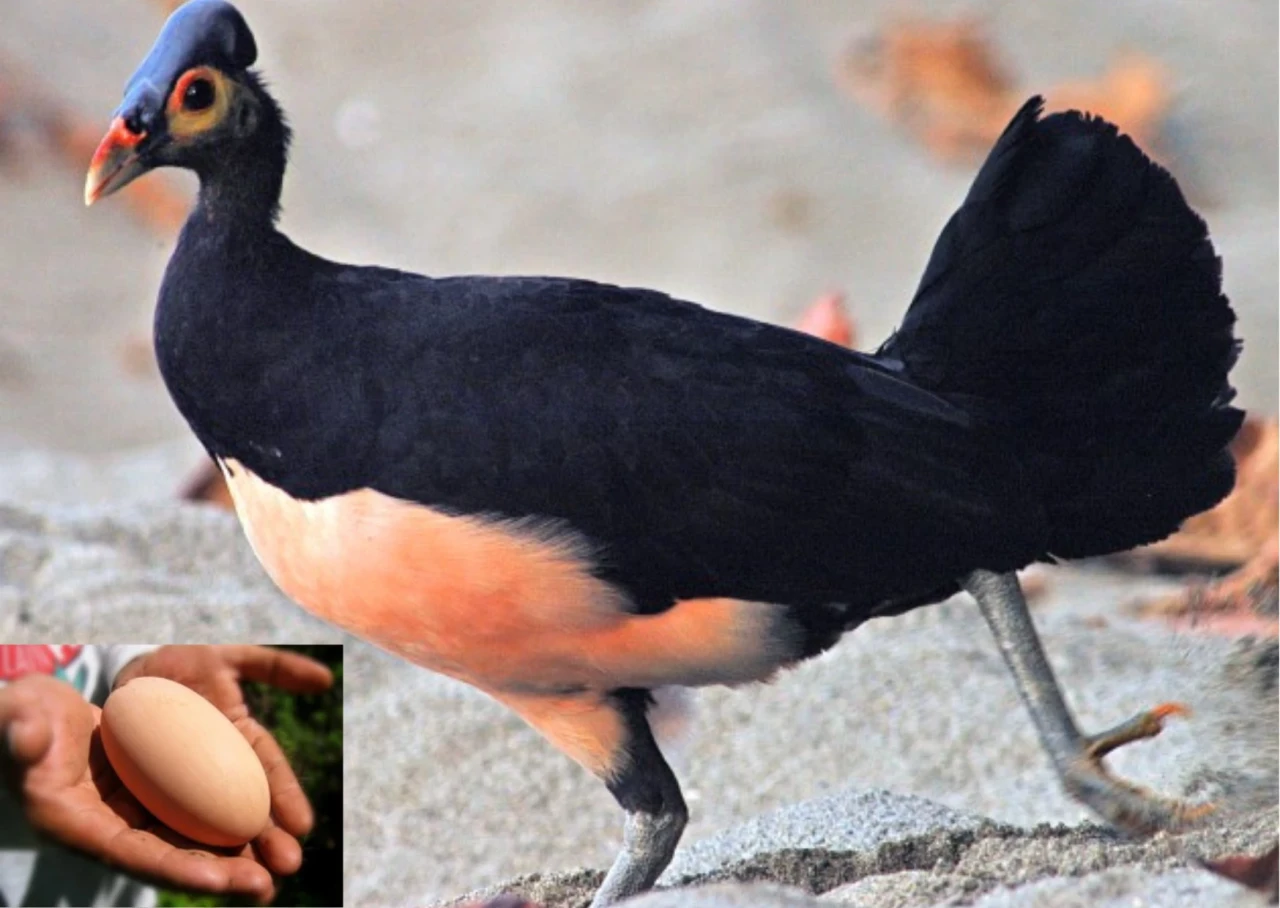
The Maleo, known in Indonesian as Burung Maleo and scientifically as Macrocephalon maleo, is a remarkable and endemic bird species found only on the Indonesian island of Sulawesi. This megapode bird is best known for its extraordinary nesting behavior and distinctive appearance.
Maleos are medium-sized birds, growing up to 55 cm in length. They have striking black and white plumage, bare pinkish skin around the eyes, and a prominent yellow-orange casque or crest on top of the head, giving them an unmistakable look among Sulawesi's forest birds.
What truly sets the Maleo apart is its reproductive strategy. Instead of incubating eggs with body heat like most birds, the Maleo lays its enormous eggs—about five times the size of a chicken’s—in naturally heated sand or soil. These geothermal nesting grounds, often near volcanic soils or sun-exposed beaches, provide the warmth necessary for egg incubation. Once hatched, the chicks emerge fully feathered, capable of flight, and receive no parental care—a rare trait in the bird world.
Due to habitat loss and illegal egg collection, the Maleo population is declining. The bird is listed as "Endangered" on the IUCN Red List, and conservation programs are now in place to protect its nesting sites. Sanctuaries, such as those in Tompotika and Lore Lindu National Park, have made significant progress in involving local communities to safeguard this iconic species.
The Burung Maleo is a symbol of Sulawesi’s rich biodiversity and a testament to the island’s unique evolutionary history. It is also culturally significant, featuring in local myths and traditions.
With over 1,700 species, it's impossible to name every remarkable bird that calls Indonesia home. From the shimmering Black-throated Sunbird to the majestic Javan Hawk-Eagle, the vibrant Grey Lorikeet, playful Weaver Birds, delicate Hummingbirds, and countless others, each species adds a unique thread to the tapestry of Indonesia’s natural heritage.
These birds are more than just the vibrant jewels of the forest—they are living symbols of Indonesia’s extraordinary biodiversity. Protecting them is not only a matter of conservation, but a shared responsibility. It requires the commitment of local communities, national efforts, and global collaboration to safeguard their habitats and future.
By preserving these winged wonders, we help ensure that the songs, colors, and grace of Indonesia’s birds continue to inspire wonder and awaken a sense of harmony with nature for generations to come.
Source: kumparan.com.
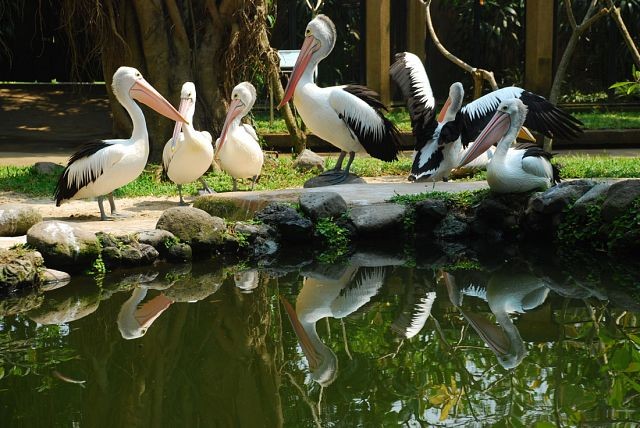
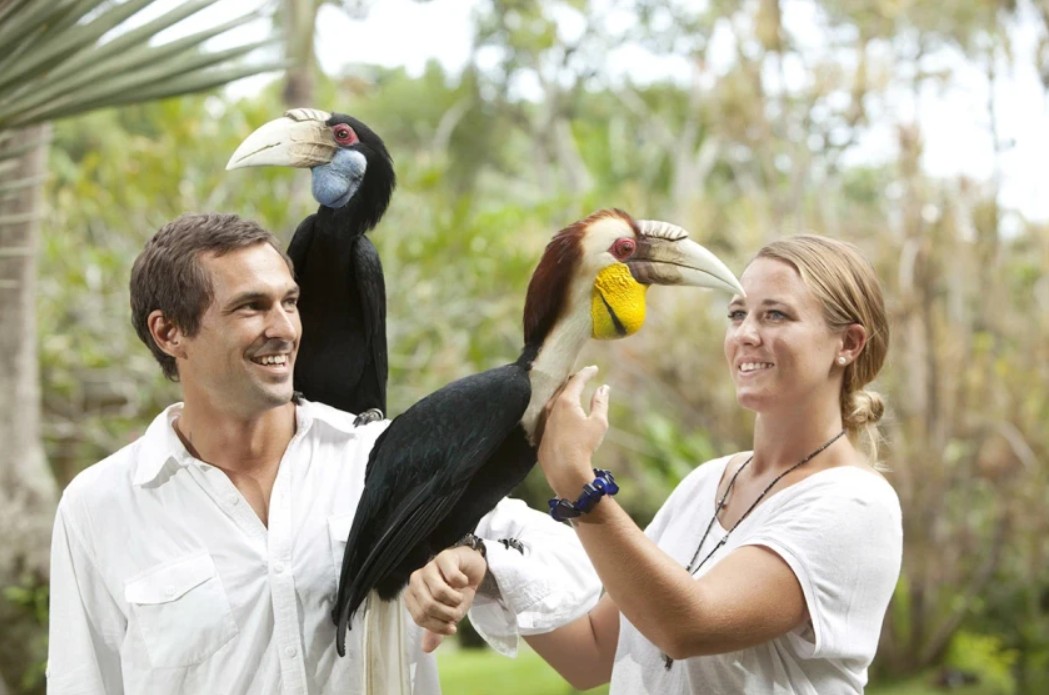
You can add one right now!